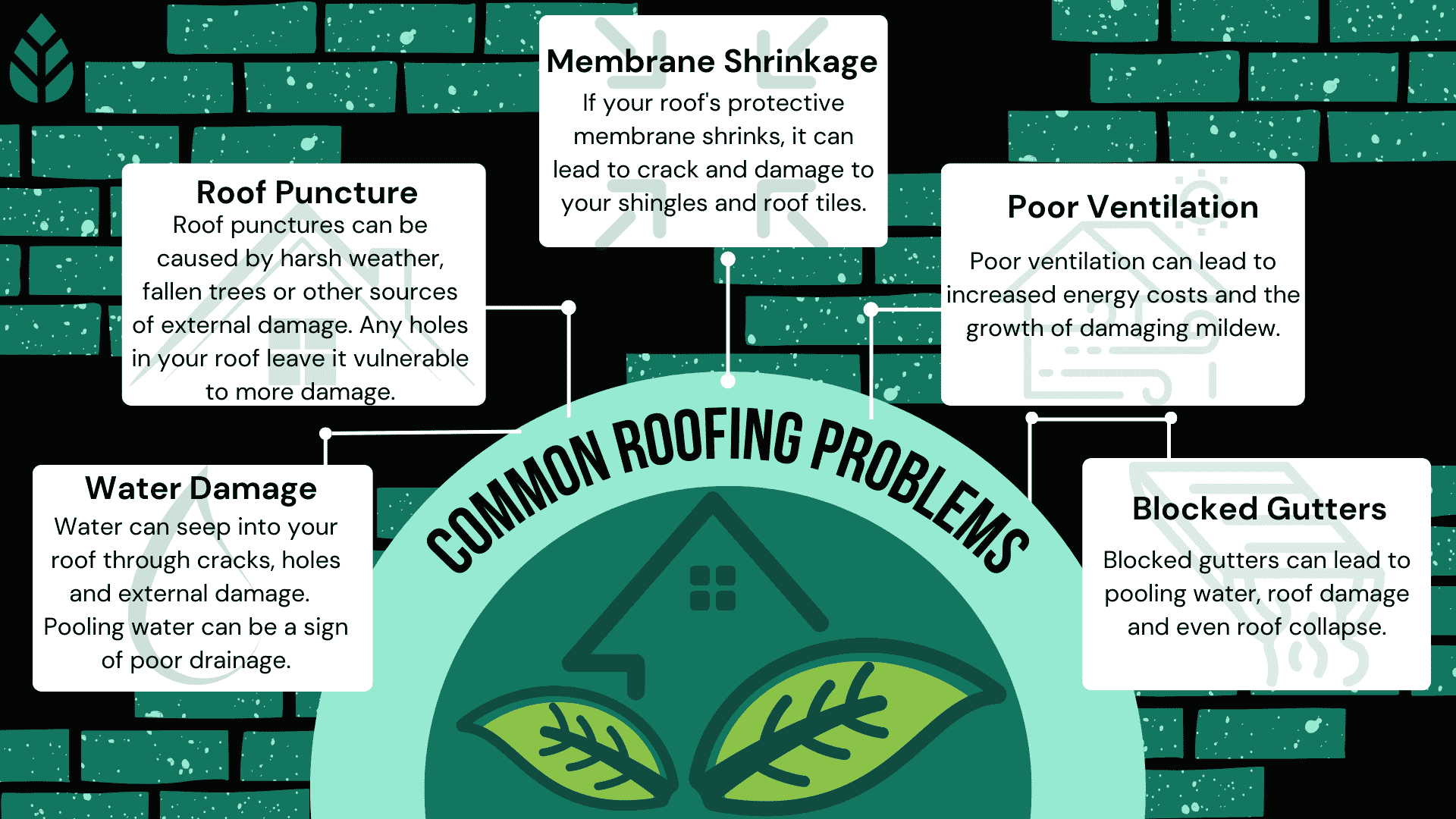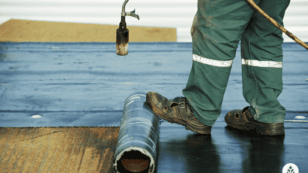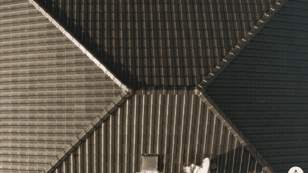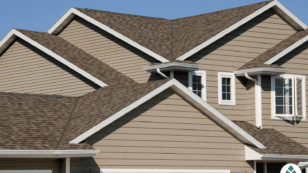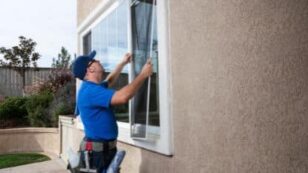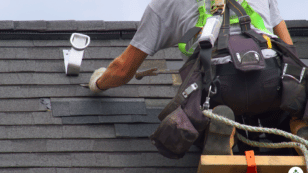
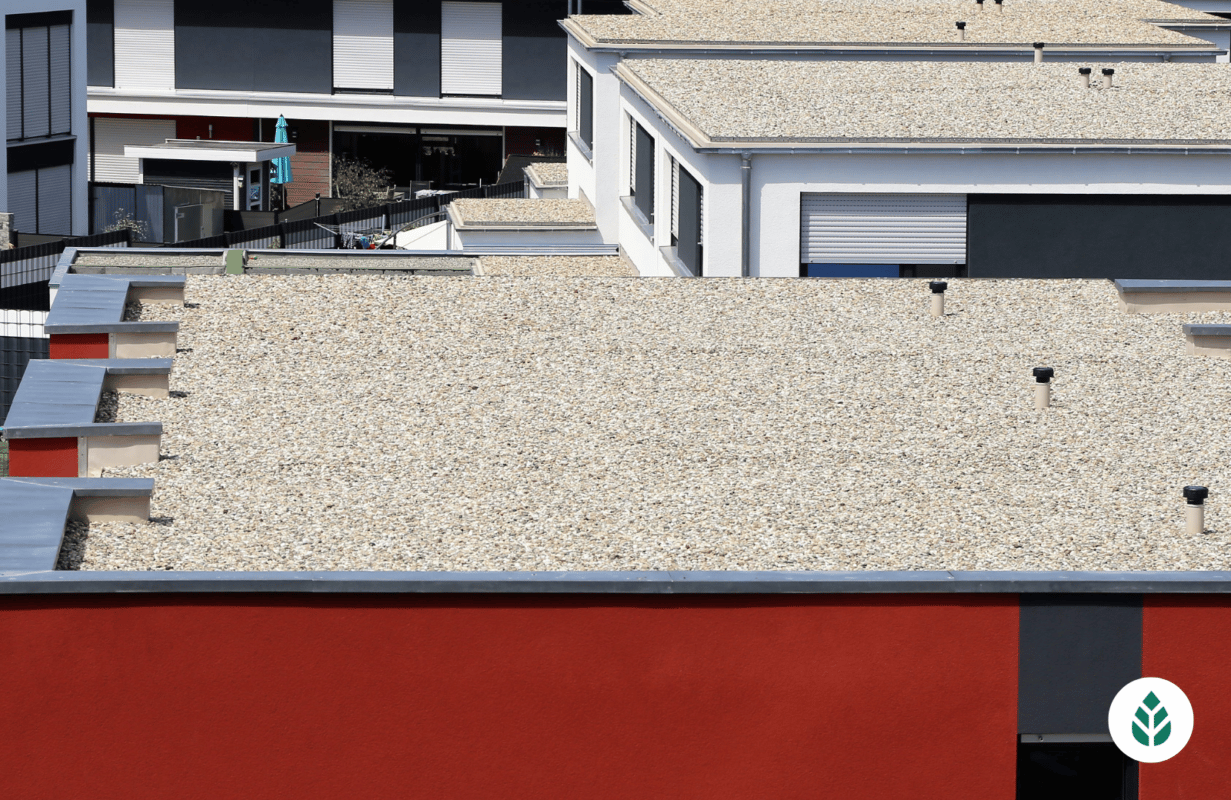
Flat Roof Cost and Homeowners Guide (2024)
Average Flat Roof Cost: $7,000 to $10,500
- Flat roofs can be durable when high-quality rubber is used for installation
- Flat roofs are some of the most energy-efficient roof designs
- Average price per square foot for flat roofs is typically between $4 and $8
This EcoWatch guide to flat roof costs has helped thousands of homeowners like you find the roofing option that works best for their home, which saves them time and money in the process.
Each product and or company featured here has been independently selected by the writer. You can learn more about our review methodology here. If you make a purchase using the links included, we may earn commission.
A flat roof is a roof with such little slope that it looks completely flat, but has just enough slope for water to drain. These roofs are often built with light-colored material that reflects heat away from the home. Flat roofs have mainly been used for commercial purposes, but more residential homes have turned to flat roofs for their affordability.
Flat roofs have a modern appearance and call for little-to-no maintenance, not to mention an ideal green roof design. These roofs are highly energy-efficient, perfect for solar panels and often less expensive than asphalt shingles.
But because of the vast range of materials used, flat roof repair costs will depend on the condition of your current roof and labor costs of local contractors.
Cost of Installing a Flat Roof
The national average for flat roof replacement costs between $7,000 and $10,500 for materials. Labor costs can add another few thousand dollars to your total. Depending on your roofing material, roof size and cost of labor in your region, some flat roofs can cost as little as $6,000 and as much as $22,000 to install in total.
Per square foot, flat roofs can cost anywhere from $4 to over $30. Metal flat roofs tend to be the most expensive, but many of the other types of flat roofs, such as flat concrete, built-ups, and modified bitumen, start on the lower end of $4 per square foot.
How to Calculate the Cost of Your New Flat Roof
To calculate the cost of your roof material, simply multiply your square footage by the cost per square foot of your chosen roofing material:
Square Footage of Your Roof X Average Square Foot of Flat Roof = Roof Estimate
The materials are only one aspect of your total flat roof cost, you also need to include other roof materials, labor and cost to remove your old roof. For the most accurate cost of your flat roof, contact a professional for a free non-committal quote.

Power Home

Average cost
Pros
- Positive industry reputation
- Lifetime or lengthy warranty
- 10+ years of experience
- Positive customer reviews
- Uses eco-friendly materials
- Well-trained, certified installers
- Variety of roofing styles available
Cons
- Limited variety of roofing materials
- Short or nonexistent warranty
- No financing information available
- Expensive
- Little information available on company website

Erie Home
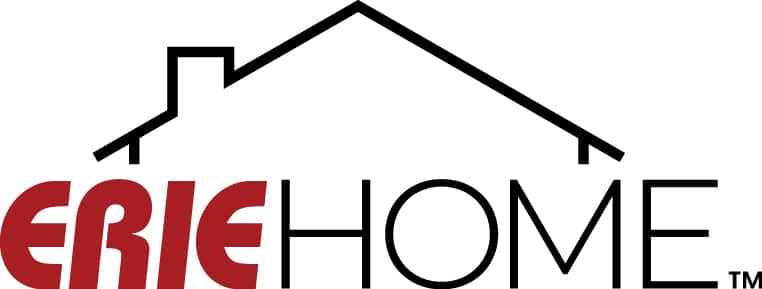
Zero Down - 18 months same as cash with minimum monthly payment
Average cost
Pros
- Lifetime or lengthy warranty
- Widespread availability
- 10+ years of experience
- Positive customer reviews
- Uses eco-friendly materials
- Financing options available
- Well-trained, certified installers
- Uses durable materials meant to last
- Variety of roofing styles available
Cons
- Limited variety of roofing materials
- Expensive

Aspen Contracting

Average cost
Pros
- Positive industry reputation
- Lifetime or lengthy warranty
- Widespread availability
- 10+ years of experience
- Positive customer reviews
- Financing options available
Cons
- Little information available on company website
Factors That Go Into Flat Roof Pricing
The total cost of your flat roof depends on the type of flat roof you install, but is also impacted by several factors, including:
- Material pricing for flat roofs
- Pricing for types of flat roofs
- Cost of labor and time to complete your roofing project
- Disposal of your current roof and dump fees
- Size and complexity of your roof
Material Pricing for Flat Roofs
Flat roof materials directly influence your final cost, but more goes into your roofing estimate than just the type of roof. To get a better estimate of your flat roof cost, check out the average cost per square foot by the most common flat roof materials below.
Flat Roof Material |
Cost of Flat Roof per Square Foot |
| Single-Ply Membrane | $4 to $7 per sq. ft. |
| Modified Bitumen | $4 to $8 per sq. ft. |
| Fiberglass | $4 to $8 per sq. ft. |
| Metal | $4 to $30 per sq. ft. |
| Ethylene Propylene Diene Monomer (EPDM) | $4 to $10.50 per sq. ft. |
| Glass-Reinforced Plastic (GRP) | $4 to $6 per sq. ft. |
| Built-Up Roofing (BUR) | $4 to $10 per sq. ft |
In addition to the material you use for your roof, you will also need the other components of your flat roof system. These critical components add to your total roofing cost, but will increase your roof’s lifespan:
- Sealant
- Ridge capping
- Gutters
- Ice and water shields
- Underlayment
- Roof flashing
- Drip edge
- Pipe boats
Pricing for Types of Flat Roofs
The material you choose for your flat roof is important to the calculation of your roof’s cost, but you also need to consider the type of flat roof you want to install. Whereas the material you choose for your roof is for both aesthetics and durability, the type of roof you install impacts your home’s insulation.
Flat Roof Type |
Description |
Benefits |
Cost Per Square Foot |
| Cold Roof | Insulation is placed between the rafters and is even with ceiling joist | Low cost and easy to install | $4 to $9 |
| Warm Roof | Insulation is installed above the ceiling joists and roof deck | Best for thermal efficiency and warm climates | $6 to $11 |
| Compact Roof | Combination of warm and cold roof construction with insulation installed between rafters | Performs well in both warm and cold climates due to maximum thermal performance | $4 to $11 |
| Inverted Roof | Waterproof layer installed under the insulation | Keeps home temperatures warm during cold months and moderate during warmer months | $4 to $9 |
| Tapered Flat Roof | Steeper slope than other flat roofs, pitch is created by the insulation | Excellent drainage, so best for climates that experience more precipitation | $7 to $10 |
| Curved Flat Roof | Roof constructed with one gable that produces a sloped edge on both sides | Excellent drainage, best for regions that get snow and rain | $8 to $15 |
| Green Roof | Flat roof topped with layers of grasses and sedum plants | Excellent insulation, thermal performance and drainage | $10 to $35 |
Basic Labor Cost and Time to Complete Flat Roof Installation
Your exact labor costs and timeline will depend on your local roofing contractor, but flat roofs tend to be easier to install than pitched roofs. The cost of labor generally falls between $1.50 and $3.50 per square foot, but this can rise to as high as $15 per square foot if you have a complex roof system and extensive roof damage.
If your flat roof systems need to be ripped out before your new roof is installed or if you have penetrations that need fixing, your final cost will be higher. The roofing material you choose also impacts labor costs. For instance, single-ply membrane roofs are the quickest to install and are often less expensive.
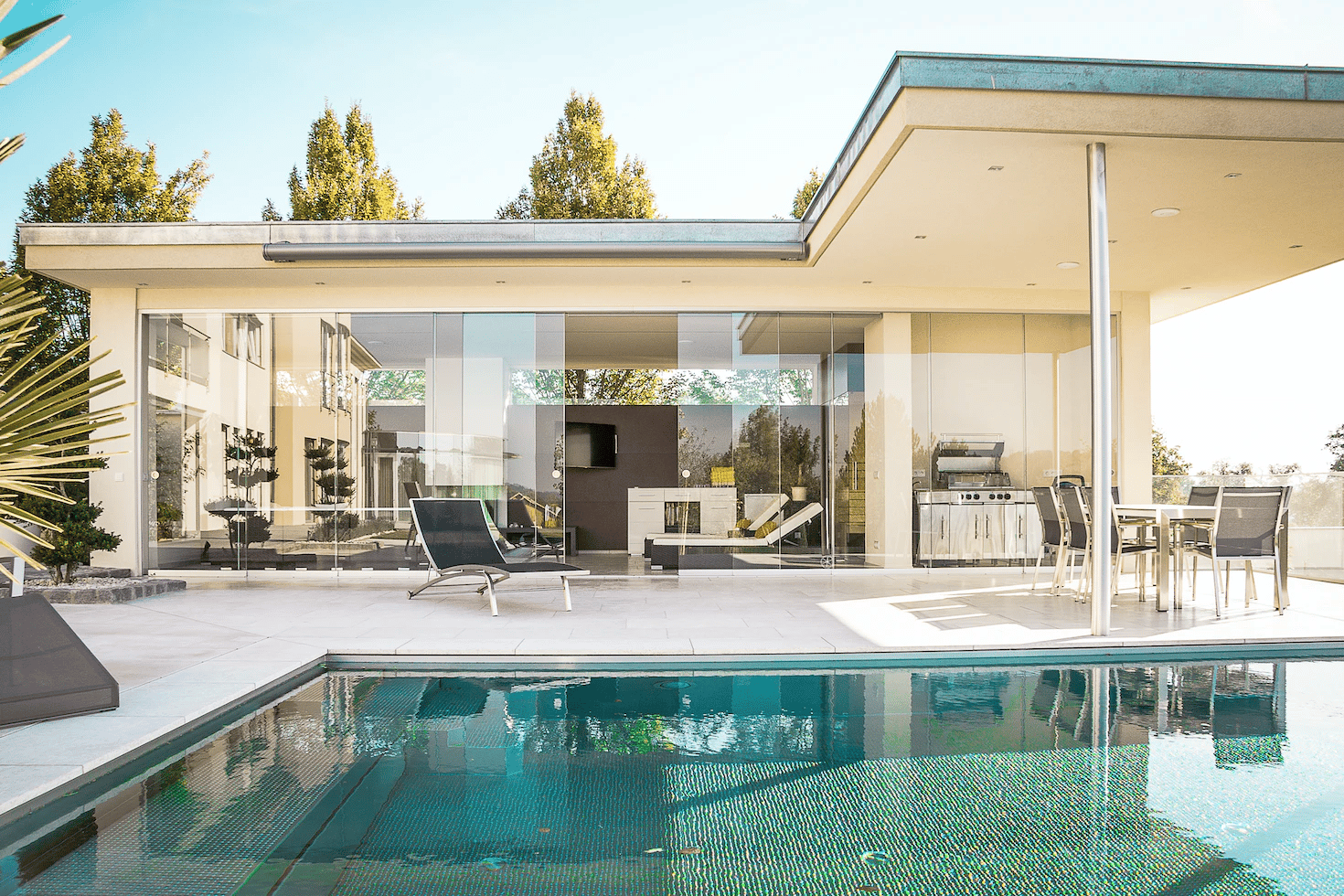
Removing Your Current Roof and Dump Fees
If you have more than two layers of roofing material already on your roof, then you will need to have all the excess material removed before the installation of your new flat roof can begin. These roofing materials will need to first be removed — which adds to your labor costs — and then disposed of via dump truck.
Size and Complexity of Your Roof
The more roof space you have, the higher the cost of your flat roof. The square footage of your roof is a great indicator of the total cost, but the complexity of your roof — such as the presence of skylight windows, tiered roof sections, chimneys or ventilation systems — can also impact the cost of your roof.
Homeowners will also need to install gutters on their flat roof as a proper drainage system to protect against interior water damage, rotting and pests. The best gutters for flat roofs are typically eavestrough or hanging rain gutters, but the right gutter may depend on your expectations for durability, aesthetics and efficiency.
Pros and Cons of Installing Flat Roofs
Before replacing your roof, it’s important to weigh the pros and cons of each type of roof. Once you’ve chosen the best roof for your home, check out our best companies for roof installation for next steps.
Advantages of Flat Roofs
- Affordable installation
- Low replacement and repair cost
- Versatile space for green roofing
- Easy maintenance
- Energy-efficient
Disadvantages of Flat Roofs
- Variable performance in colder climates
- Requires homeowner maintenance
- Some flat roofs have shorter lifespans
- Without preventative maintenance, green roofs can cause leaks
Lifetime and Durability of Flat Roofs
Both the lifespan and durability of a flat roof depend on the flat roof material used and your geographical location. Whereas some types of flat roofs, such as EPDM roofs, are more durable and can last for more than 40 years, other flat roofs have a short, 10-year life expectancy.
EPDM and BUR flat roofs tend to be more durable and last longer than bitumen and TPO roofs, but this extra durability typically comes at a higher installation price. You can expect the following lifespans for these common types of flat roofs:
- Built-up roofing (BUR): Between 10 and 25 years
- Modified bitumen (single-ply membrane): 15 to 25 years
- Ethylene Propylene Diene Monomer (EPDM): 40+ years
- Thermoplastic Polyolefin (TPO): 15 to 20 years
- Green roof: 20 to 50+ years
Unlike sloped roofs that are built at a steeper angle, flat roofs are at a higher risk for water pooling. Homeowners need to keep an eye out for any leaks and damage, because even the smallest puncture can lead to significant damage. If you do get heavy rain, snow or fallen leaves, set a regular maintenance schedule to make sure your roof is clean and debris-free.
Flat roofs are better suited for warmer climates that don’t experience heavy snowfall, but that doesn’t mean you can’t have a flat roof if you live in a colder climate. Rubber roofs and bitumen flat roofs perform better in cold environments, and TPO and single-lay are best for hotter climates.
Are Flat Roofs Environmentally Friendly?
Depending on the material used to build your roof, flat roofs can be eco-friendly. Ethylene Propylene Diene Monomer (EPDM) — a durable rubber that is often used in the construction of flat roofs — is ideal for roofs because of its ability to withstand extreme conditions. It’s also easier to install than traditional roofing materials and has outstanding reusability.
Because flat roofs have a membrane system installed on top of rigid insulation, they are more energy-efficient than pitched roofs. This improved energy efficiency is due to the flat roof’s lack of air cavity insulation, which inherently contains gaps between the ceiling joints. Instead, flat roofs have a continuous insulation system that maintains a consistent R-value throughout.
Flat roofs have become popular in urban areas because they are perfect for green roofing: the creation of a rooftop oasis and potential outdoor living space. EPDM rubber roofing is waterproof and durable, so urban homeowners can plant grasses and sedum plants without the worry that the plants will compromise the roof’s structure.
Financing Your New Flat Roof
Although you can pay for your roof entirely out of pocket, most homeowners finance their roofing project. There are many ways to finance your roof, so homeowners can find a loan or payment plan that works best for their situation. Some of the most common financing options for roof projects include:
- Home equity loan
- Home equity line of credit (HELOC)
- Cash-out refinance
- FHA loans
- Personal loans
- Contractor loans
- Credit card
If your current roof is damaged while still under warranty, you can contact your provider to see if the damage is covered. Government grants — such as weatherization assistance programs, single-family home repairs and house preservation programs — are also available for homeowners who need a new roof.1
The ROI of Your Flat Roof
A new roof is not only for aesthetics and improved energy efficiency, a new flat roof can also improve the value of your home. The return on investment (ROI) of a new roof is about 60% to 70%, and can be a great selling point if you plan to sell your home.2
Costs of Maintenance and Repairs for Flat Roofs
The cost of flat roof repair will vary depending on the extent of the damage. Simpler repairs, such as patching a leak or fixing a crack, can be as cheap as $150. But if you have larger problems like water damage, underlayment issues or electrical problems, you may be looking at thousands of dollars in roof repairs.
One of the most common problems with flat roofs is the potential for pooling water. Even though flat roofs do have enough slope for water to drain, running water can drag debris into your gutters and block your pipes. Once this happens, water can pool on your roof and cause interior damage.
Roof Painting Prices for Flat Roofs
If you are looking for a budget-friendly alternative to roof replacement, you can paint your flat roof instead. The cost to paint your roof ranges from $1,000 to $3,000, and can be even cheaper if you do it yourself.
Costs of Cleaning your Flat Roof
Because flat roofs are susceptible to water pooling and leakage, it’s incredibly important to keep your flat roof clean and free of any debris. Homeowners can maintain their flat roofs themselves, or can hire a professional cleaning company to do regular maintenance.
Unlike steep roofs that are more dangerous to keep clean, it’s perfectly safe for homeowners to take flat roof maintenance into their own hands. To clean a flat roof, you’ll need a scrub brush for dirt, a broom for sweeping off debris and a pressure washer for surface cleaning. Homeowners will also need to clean their gutters so that water can drain.
The cost to clean your flat roof depends on the method for cleaning, but is typically calculated by your roof’s square footage. For the average 1,700-square-foot roof, you can expect to pay between $340 and $1,200 for a single roof cleaning.
Are Flat Roofs Worth the Cost?
Flat roofs have increased in popularity due to their modern appearance and easy maintenance. Homeowners who live in warmer climates and those who reside in urban jungles can benefit from these roofs the most, whether they plant an eco-friendly green roof or simply want upgraded curb appeal.
As compared to other types of roofs, flat roofs are generally lower in cost, but they do require more upkeep. When built with durable EPDM rubber and regularly maintained, these roofs are absolutely worth the investment.
FAQ: Flat Roof
Flat roofs are worth it because they are affordable, perfect for solar panels and can be used as outdoor living spaces. As with all roofing options, flat roofs can be an excellent option depending on your location. Flat roofs are not suitable for homes that experience heavy snowfall, but they are absolutely worth it for the homeowner on a budget.
Flat roofs are ideal for solar panel placement because the level surface makes it easy to angle your panels for optimal sunshine absorption. These roofs are built with durable material that can support the weight of a solar panel system.
Flat roofs are often cheaper than traditional shingles in both cost of material and labor. This is because flat roofs are easier to install than pitched roofs. However, shingles may be more affordable in the long run due to the 10-year average lifespan of flat roofs.

 233k
233k  41k
41k  Subscribe
Subscribe 
